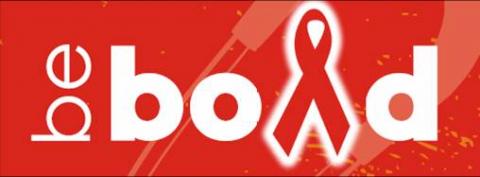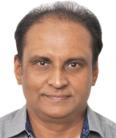
The Be Bold Campaign is considered as one of the best interventions in the fight against HIV/AIDS, acknowledged even by UNAIDS. This campaign had resulted in significant reduction of stigma and discrimination against HIV+ve people and mother to child transmission in the state of Andhra Pradesh, India and increase in testings to know HIV status and off take of medicines and treatment; resulting in a perceivable reduction in overall incidence of HIV. G.Asok Kumar, the man behind this campaign as Project Director of AP State AIDS Control Society (APSACS) from June 2006 to March 2008, was invited to make a presentation in the International AIDS Society’s Annual Conference in Mexico city in August 2008.
The ‘Be Bold’ campaign was launched with an aim to “translate awareness into action/(behavioural change), reduce stigma and discrimination against affected people”. Be bold was the message and testing was the medium. Be Bold was a positive campaign to face the Challenge Boldly and not to live in denial.
“Testing, Tracking (and Counseling) the infected, Treatment and Stigma-Reduction were the four pillars on which the successful ‘Be Bold’ campaign was built. People were encouraged to Be-Bold to come out and test to know their HIV status and modify their behavior accordingly. Those tested positive for HIV virus were counseled to behave responsibly to prevent further transmission of the virus and to utilize the health services provided to save from infections due to their reduced immunity levels. Those tested negative were advised to use safe practices and avoid getting infected.
To reduce stigma the strategies adopted under the campaign were to (a) popularize HIV testing, (b) involve political leadership and people’s representatives as participants in testing and (c) sensitize them about the issues related to PLHAs, (d) mainstream prevention programs involving many Government departments and people from all walks of life (e) scale up the health delivery services and make them available at the PHC level (f) increase awareness dispelling the doubts and myths associated with the disease, by using innovative IEC efforts/ media (g) use non-judgmental and non-stigmatizing messages, instead of the earlier messages with moralizing overtones(h) mobilize the People Living withHIV/AIDS (PLHAs) into networks and build their capacity to fight for dignity by organizing their meetings frequently, giving them training and facilitating their treatment involving trained, sensitive doctors.
People hesitate to know their HIV status because of the stigma associated with testing and lack of awareness about care and support, medical services available for HIV+ve people. In the campaign, these fears were addressed before encouraging people to come forward for HIV tests.
Leading the testing campaign, Dr YS Rajasekhara Reddy, the then Chief Minister of Andhra Pradesh state, his cabinet colleagues, Speaker of the Legislative Assembly underwent the HIV tests publically, triggering off a fivefold increase (from 5 lakhs to 24 lakhs) in the number of tests during the campaign period (compared to the same period prior to the campaign). This massive testing helped to uncover many positive cases. They were tracked and confidentially counseled for safe practices which helped to contain new infections. They were also brought under medical care of those medical professionals who were Bold to treat these HIV+ve people. These Bold doctors were formed into “Bold Doctors clubs” in every district and their names listed in a directory so that the HIV+ve people could go to them Boldly to get medical help.
Be-Bold campaign had general as well as targeted messaging which were non-judgmental and positive in nature , mainly against the stigma and discrimination that got associated with HIV. These were conveyed using two specially designed cartoon character couples- Ashanna and Ashakka (Asha in local Telugu language is Hope) . A toll-free number 1097- was launched to help people to know more about HIV/AIDS, its causes, symptoms and treatment.
The campaign mainstreamed the fight against HIV involving all wings of Government, civil society, and people. Initiatives like the “0/7 initiative” to prevent HIV transmission from Mother to Child; drive for behavioral changes among sex-workers to increase condom usage etc were also part of the Be-Bold campaign. The crowning glory of boldness was when 8000 plus People Living with HIV/AIDS congregated openly at Silparam, Hyderabad on 7 December, 2007. This is the largest gathering ever of HIV +ve people in the world and a great morale booster for those who gathered there.
The campaign brought about perceptible systemic changes in the way the issues related to HIV was handled; built up institutions and strengthened them for sustainability. It brought together the affected community and empowered them. It mainstreamed the fight against HIV by closely involving PLHAs, people in high risk groups, political leadership and elected representatives-- making it as a people’s movement thereby considerably reducing the stigma. It involved people of all age groups.The 0/7 initiative under the campaign aimed at HIV free new generation by meticulously medically following up all HIV+ve pregnant mothers, their delivery and post partum care; and new born children. Red Ribbon club formed in schools and colleges ensured the involvement of adolescents. Care and counseling centers catered to the infected and their families.
With the BeBold campaign, the new incidences and deaths due to HIV in the state came down drastically and the stigma associated has almost disappeared.


